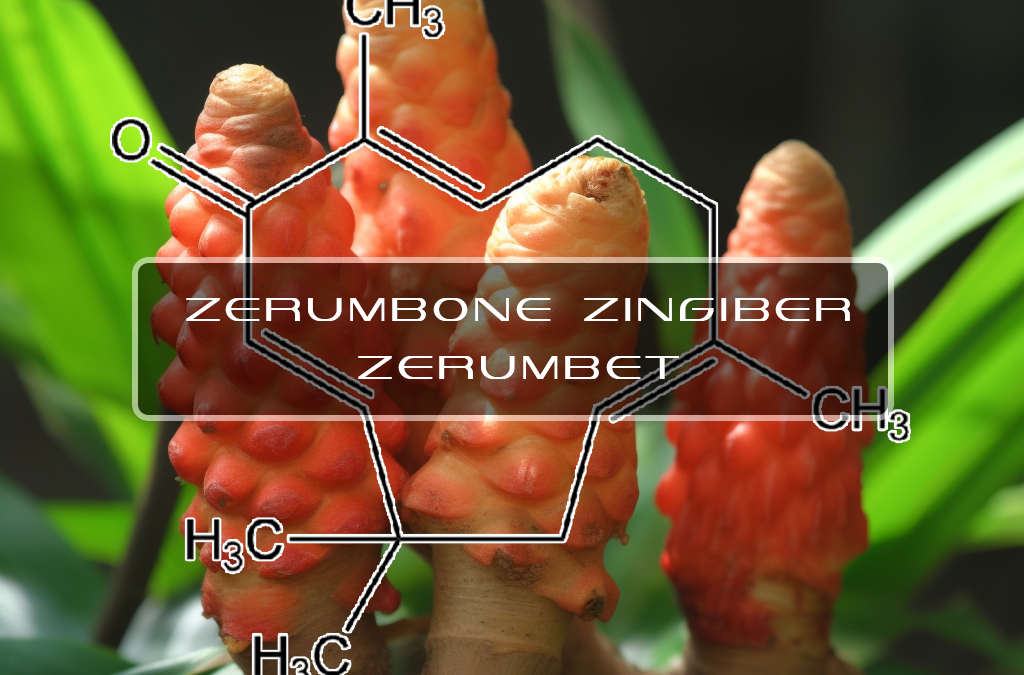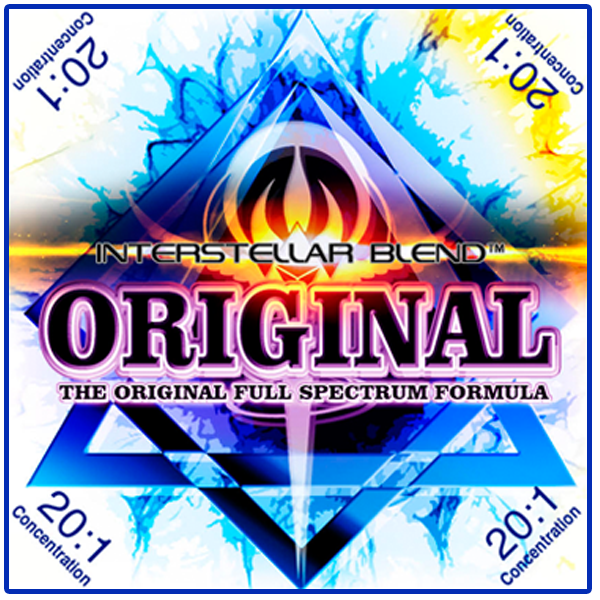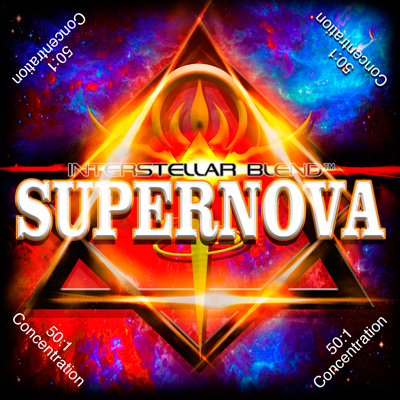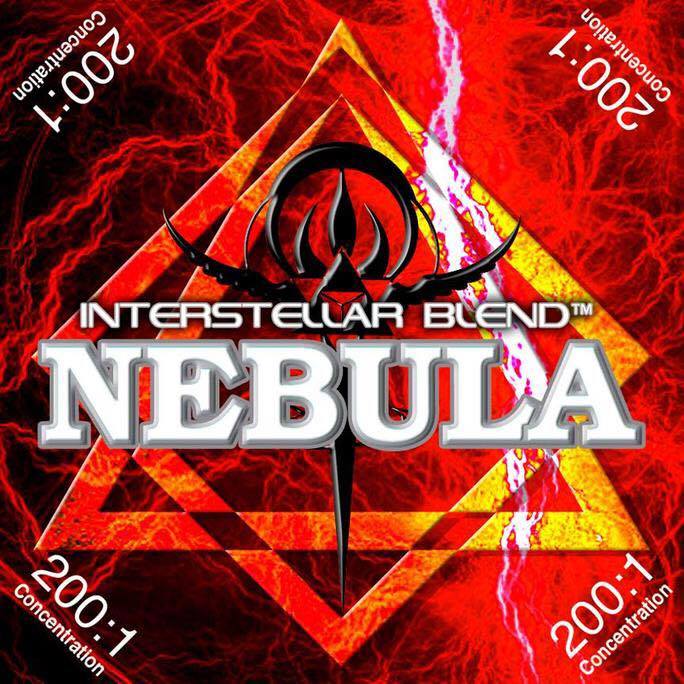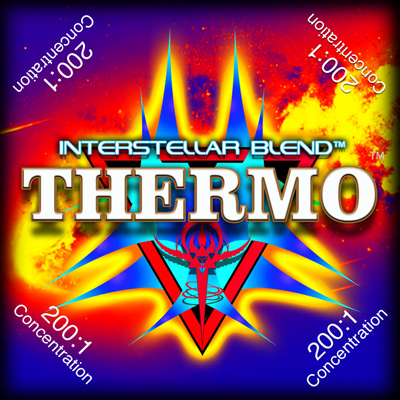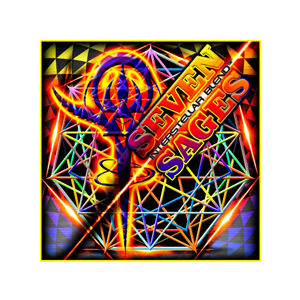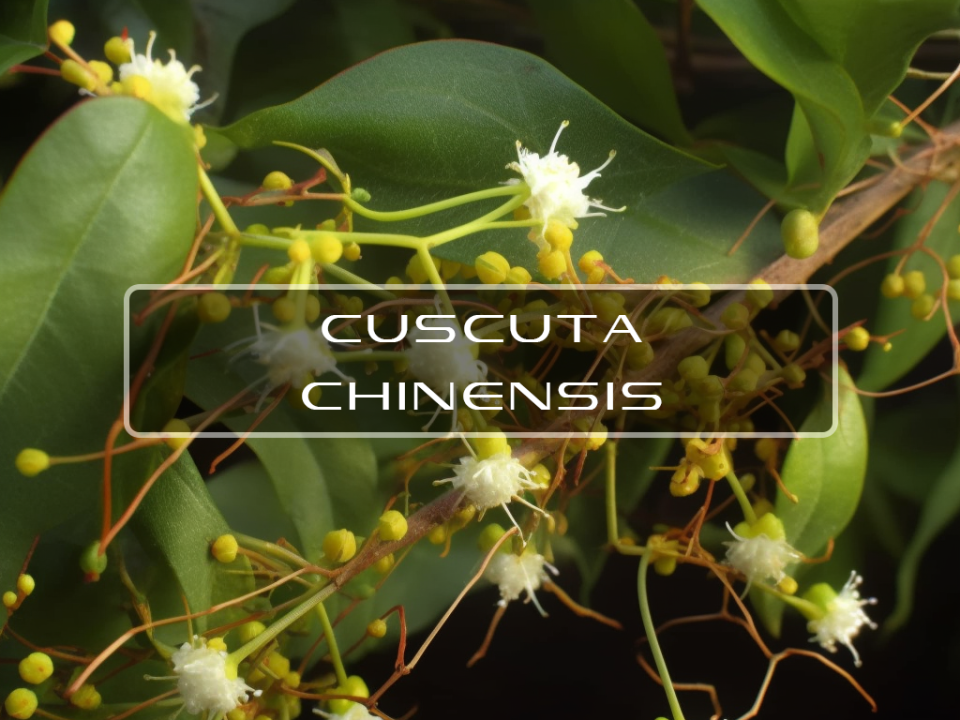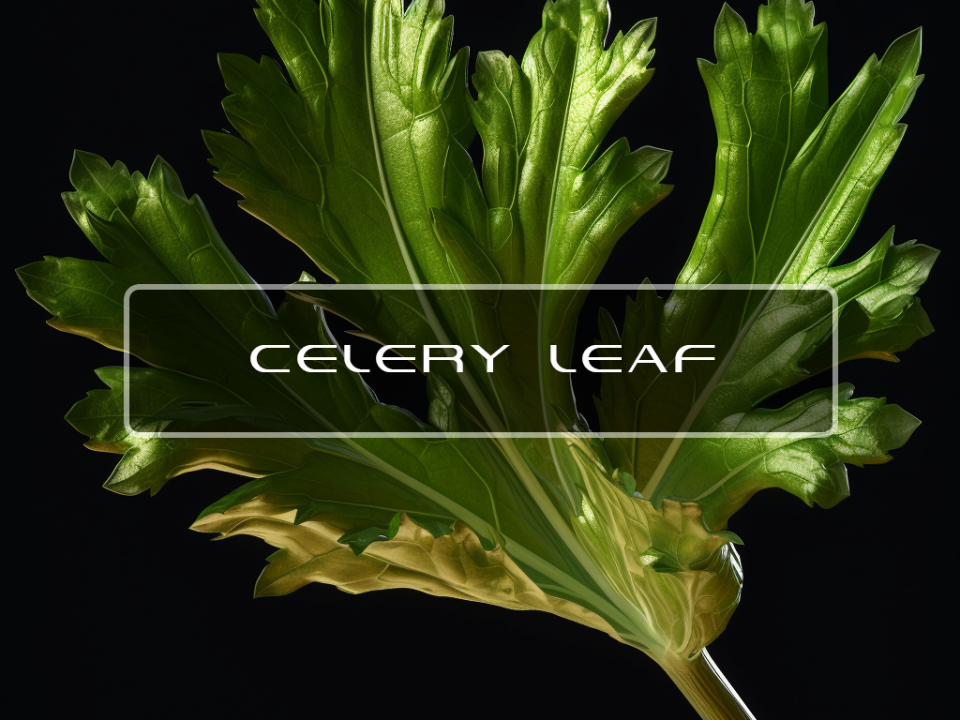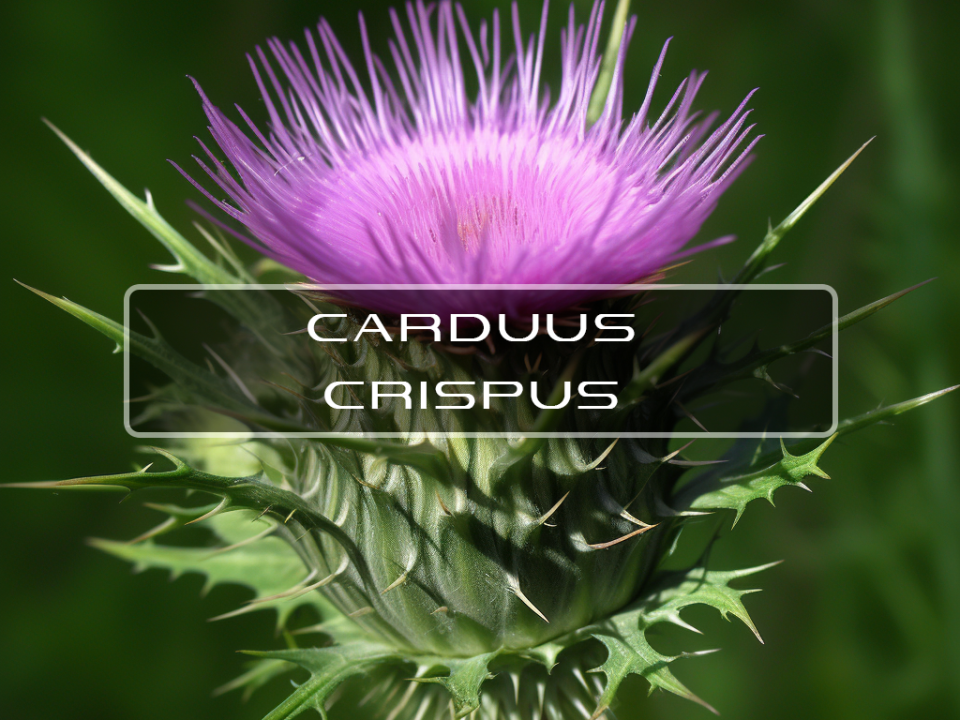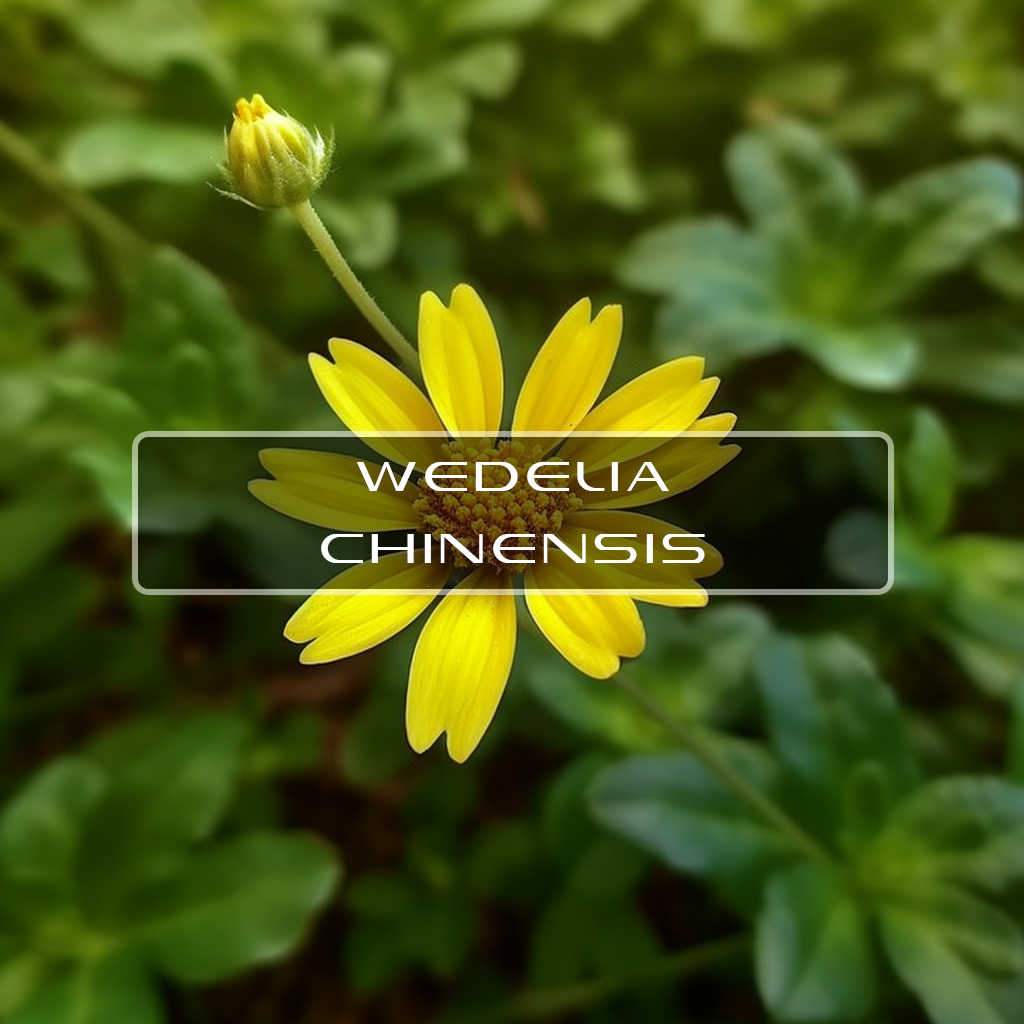
Wedelia Chinensis
November 1, 2018
Zingiber Officinale Roscoe
November 1, 2018Zingiber Zerumbet

This herb has been utilized regularly as a type of food flavoring and even as an appetizer in Malaysia.
The name Zingiber actually stems from a Sanskrit word which means a Bull's Horn. The leaves can be purple located beneath the young shoots and are rather thin and around 25-35cm in length.
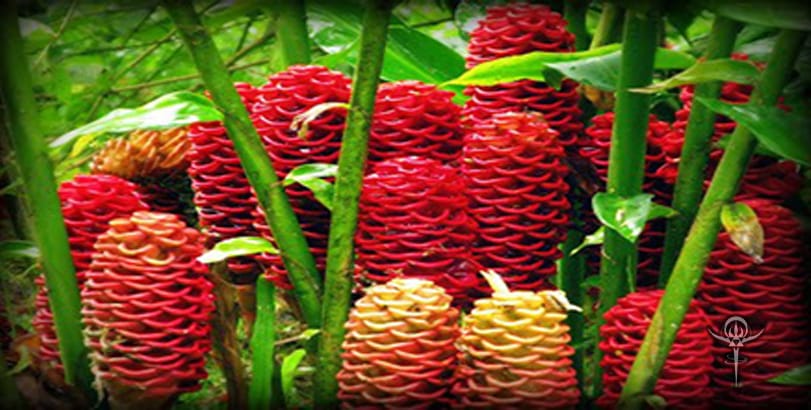
Benefits of Zingiber Zerumbet
Zerumbone significantly showed an antiproliferative activity upon HepG2 cells with an IC50 of 3.45 ± 0.026 μg/ml. Zerumbone was also found to inhibit the proliferation of non-malignant Chang Liver and MDBK cell lines.
Zerumbone was found to induce the apoptotic process in HepG2 cells through the up and down regulation of Bax/Bcl-2 protein independently of functional p53 activity.
Anti-Inflammatory - In this paper, zerumbone (1), 3-O-methyl kaempferol (2), kaempferol-3-O-(2, 4-di-O-acetyl-α-l-rhamnopyranoside) (3), and kaempferol-3-O-(3,4-di-O-acetyl-α-l-rhamnopyranoside) (4) were isolated from the rhizome of Z. zerumbet.
According to the in vitro study, 1 had greater anti-inflammatory effects than 2. Therefore, mice were administered with 1 (10 mg/kg) 1 h before carrageenan injection, and the oedema was significantly attenuated compared to the vehicle control.
Mature rhizomes were richer in 1 and lower in moisture. We suggest that the economic cultivation period of Z. zerumbet is the 5th month after seeding when its functions as food and anti-inflammatory are maximum, because 1 is dramatically increased at that time.
In the next study, we evaluated the anti-inflammatory and chemopreventive potentials of ZER in a variety of cell culture experiments.
The results indicate that ZER is a food phytochemical that has distinct potentials for use in anti-inflammation, chemoprevention, and chemotherapy strategies.
Anti-Tumor - CXC chemokine receptor 4 (CXCR4), initially linked with leukocyte trafficking, is now known to be expressed in various tumors including breast, ovary, prostate, gastrointestinal, head and neck, bladder, brain, and melanoma.
This receptor mediates homing of tumor cells to specific organs that express the ligand CXCL12 for this receptor.
Thus, agents that can down-regulate CXCR4 expression have potential against cancer metastasis. In this study, we report the identification of zerumbone, a component of subtropical ginger (Zingiber zerumbet), as a regulator of CXCR4 expression.
Results show that zerumbone is a novel inhibitor of CXCR4 expression and thus has a potential in the suppression of cancer metastasis.
As a result, the plant extracts were inactive against the enzyme activity of β-hexosaminidase. These findings support the use in Thai traditional medicine of these selected Zingiberaceous plants, especially Kaempferia parviflora and Zingiber cassumunar, for treatment of allergy and allergic-related diseases.
Anti-Cancer - One natural compound called zerumbone, a cyclic eleven-membered sesquiterpene, isolated from the tropical plant Zingiber zerumbet Smith that has attracted great attention recently for its potent anticancer activities in several tumor models.
This review summarizes the data based on various in vitro and in vivo studies related to the effects of zerumbone on numerous pivotal molecular targets in cancer and its reported chemopreventive/therapeutic effects in different models of cancer.
The study investigated the purified zerumbone crystals for its anti-cancer properties on human cervical cancer cell line (HeLa). Cisplatin, was used as a positive control in this study.
The cytotoxicity of zerumbone and cisplatin were investigated using the MTT assay and caspases-3 was estimated with colorimetric assay in zerumbone treated HeLa cells.
This study showed promising avenues towards zerumbone to be developed as a new chemo-natural drug for treatment of cervical cancer.
In the next study they assessed the effects of zerumbone on cell proliferation activity of crypts by counting silver-stained nucleolar organizer regions protein (AgNORs) in colonic cryptal cell nuclei.
These findings might suggest possible chemopreventive ability of zerumbone, through suppression of COX-2 expression, cell proliferating activity of colonic mucosa, and induction of phase II detoxification enzymes in the development of carcinogen-induced ACF.
Anti-Microbial - In this study they investigated antimicrobial effects of ethanolic extract of Zingiber zerumbet (Z. zerumbet) (L.) Smith and its chloroform and petroleum ether soluble fractions against pathogenic bacteria and fungi.
At a concentration of 400 µg/disc, all the samples showed mild to moderate antibacterial and antifungal activity and produced the zone of inhibition ranging from 6 mm to 10 mm.
It can be concluded that, potent antibacterial and antifungal phytochemicals are present in ethanol extract of Z. zerumbet (L).
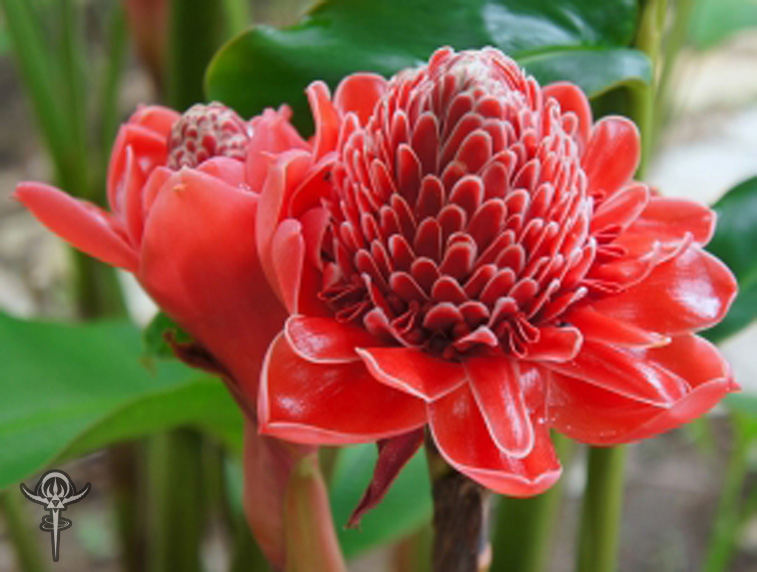
Related Products
Scientific studies
- Zerumbone, a tropical ginger sesquiterpene, activates phase II drug metabolizing enzymes
- Zerumbone, a tropical ginger sesquiterpene, inhibits colon and lung carcinogenesis in mice
- Zerumbone induced apoptosis in liver cancer cells via modulation of Bax/Bcl-2 ratio
- Antitumor activity of extract of Zingiber aromaticum and its bioactive sesquiterpenoid zerumbone
- Studies in sesquiterpenes—XVI: Zerumbone, a monocyclic sesquiterpene ketone
- Zerumbone, a sesquiterpene in subtropical ginger, suppresses skin tumor initiation and promotion stages in ICR mice
- Anti-inflammatory effect of zerumbone on acute and chronic inflammation models in mice
- Chemoprevention of azoxymethane-induced rat aberrant crypt foci by dietary zerumbone isolated from Zingiber zerumbet
- Zerumbone induces apoptosis in T-acute lymphoblastic leukemia cells
- In vitro ultramorphological assessment of apoptosis induced by zerumbone on (HeLa)
- Zerumbone-loaded nanostructured lipid carriers: preparation, characterization, and antileukemic effect
- Zerumbone, an HIV-inhibitory and cytotoxic sesquiterpene of Zingiber aromaticum and Z. zerumbet
- Anticancer and antimicrobial activities of zerumbone from
- Characterization of the inclusion complex of zerumbone with hydroxypropyl-β-cyclodextrin
- Chemistry of zerumbone. 2. Regulation of ring bond cleavage and unique antibacterial activities of zerumbone derivatives
- Preliminary analysis of the antinociceptive activity of zerumbone
- Zerumbone abolishes NF-κB and IκBα kinase activation leading to suppression of antiapoptotic and metastatic gene expression, upregulation of apoptosis …
- Antitumor effects of zerumbone from Zingiber zerumbet in P-388D1 cells in vitro and in vivo
- Attractive reactivity of a natural product, zerumbone
- Zerumbone, a Southeast Asian ginger sesquiterpene, markedly suppresses free radical generation, proinflammatory protein production, and cancer cell proliferation …
- Zerumbone down-regulates chemokine receptor CXCR4 expression leading to inhibition of CXCL12-induced invasion of breast and pancreatic tumor cells
- Suppression of dextran sodium sulfate-induced colitis in mice by zerumbone, a subtropical ginger sesquiterpene, and nimesulide: separately and in combination
- Zerumbone enhances TRAIL-induced apoptosis through the induction of death receptors in human colon cancer cells: Evidence for an essential role of reactive …
- Zerumbone, a bioactive sesquiterpene, induces G2/M cell cycle arrest and apoptosis in leukemia cells via a Fas‐and mitochondria‐mediated pathway
- Key cell signaling pathways modulated by zerumbone: role in the prevention and treatment of cancer
- Nuclear magnetic resonance spectroscopy. The conformational mobility of humulene and zerumbone
- In vitro covalent binding proteins of zerumbone, a chemopreventive food factor
- Zerumbone inhibits tumor angiogenesis via NF-κB in gastric cancer
- Chemistry of zerumbone. 1. Simplified isolation, conjugate addition reactions, and a unique ring contracting transannular reaction of its dibromide
- Zerumbone inhibits interleukin-6 and induces apoptosis and cell cycle arrest in ovarian and cervical cancer cells
- Zerumbone abolishes RANKL-induced NF-κB activation, inhibits osteoclastogenesis, and suppresses human breast cancer–induced bone loss in athymic nude mice
- Potential chemoprevention of diethylnitrosamine-initiated and 2-acetylaminofluorene-promoted hepatocarcinogenesis by zerumbone from the rhizomes of the …
- Zerumbone, a Southeast Asian ginger sesquiterpene, induced apoptosis of pancreatic carcinoma cells through p53 signaling pathway
- Zerumbone inhibits angiogenesis by blocking NF-κB activity in pancreatic cancer
- Anticancer activity of natural compound (Zerumbone) extracted from Zingiber zerumbet in human HeLa cervical cancer cells
- The chemistry of zerumbone. Part 5: Structural transformation of the dimethylamine derivatives
- Zerumbone: a natural compound with anti-cholinesterase activity
- Antibacterial and antimutagenic activities of novel zerumbone analogues
- Zerumbone, an anti‐inflammatory phytochemical, induces expression of proinflammatory cytokine genes in human colon adenocarcinoma cell lines
- Cytotoxicity against cholangiocarcinoma cell lines of zerumbone derivatives
- Zingiberaceous and citrus constituents, 1′-acetoxychavicol acetate, zerumbone, auraptene, and nobiletin, suppress lipopolysaccharide-induced cyclooxygenase-2 …
- Evaluation of the genotoxicity of zerumbone in cultured human peripheral blood lymphocytes
- Zerumbone‐Induced Antinociception: Involvement of the l‐Arginine‐Nitric Oxide‐cGMP ‐PKC‐K+ATP Channel Pathways
- The chemistry of zerumbone IV: asymmetric synthesis of Zerumbol
- Zerumbone: a potential fungitoxic agent isolated from Zingiber cassumunar Roxb.
- Zerumbone induces heme oxygenase-1 expression in mouse skin and cultured murine epidermal cells through activation of Nrf2
- Immunomodulatory effects of zerumbone isolated from roots of Zingiber zerumbet
- Calpain and reactive oxygen species targets Bax for mitochondrial permeabilisation and caspase activation in zerumbone induced apoptosis
- Zerumbone suppresses phorbol ester-induced expression of multiple scavenger receptor genes in THP-1 human monocytic cells
- Biomedical properties of a natural dietary plant metabolite, zerumbone, in cancer therapy and chemoprevention trials
- Zerumbone, a tropical ginger sesquiterpene, ameliorates streptozotocin-induced diabetic nephropathy in rats by reducing the hyperglycemia-induced …
- Zingiber zerumbet CYP71BA1 catalyzes the conversion of α-humulene to 8-hydroxy-α-humulene in zerumbone biosynthesis
- Attenuation of cisplatin-induced nephrotoxicity in rats using zerumbone
- Zerumbone enhances the Th1 response and ameliorates ovalbumin-induced Th2 responses and airway inflammation in mice
- Antisecretory, gastroprotective, antioxidant and anti-helicobcter pylori activity of zerumbone from Zingiber Zerumbet (L.) Smith
- Dietary zerumbone prevents against ultraviolet B-induced cataractogenesis in the mouse
- Dietary zerumbone prevents mouse cornea from UVB-induced photokeratitis through inhibition of NF-κB, iNOS, and TNF-α expression and reduction of MDA …
- Zerumbone-loaded nanostructured lipid carrier induces G2/M cell cycle arrest and apoptosis via mitochondrial pathway in a human lymphoblastic leukemia …
- Zerumbone isolated from Zingiber zerumbet inhibits inflammation and pain in rats
- Zerumbone suppresses IKKα, Akt, and FOXO1 activation, resulting in apoptosis of GBM 8401 cells
- Molecular cloning and functional characterization of α-humulene synthase, a possible key enzyme of zerumbone biosynthesis in shampoo ginger (Zingiber zerumbet …
- Zerumbone exerts a beneficial effect on inflammatory parameters of cholecystokinin octapeptide-induced experimental pancreatitis but fails to improve histology
- Crystal structure of zerumbone [(E, E, E)-2, 6, 9, 9-Tetramethylcycloundeca-2, 6, 10-trien-1-one]
- Unprecedented olefin-dependent histidine–kinase inhibitory of zerumbone ring-opening material
- Zerumbone causes Bax-and Bak-mediated apoptosis in human breast cancer cells and inhibits orthotopic xenograft growth in vivo
- Optimization of SC–CO2 extraction of zerumbone from Zingiber zerumbet (L) Smith
- Regression of cervical intraepithelial neoplasia by zerumbone in female Balb/c mice prenatally exposed to diethylstilboestrol: involvement of mitochondria-regulated …
- Zerumbone attenuates the severity of acute necrotizing pancreatitis and pancreatitis-induced hepatic injury
- Zerumbone exerts antiproliferative activity via apoptosis on HepG2 cells
- Transannular cyclizations of zerumbone epoxide
- High content of zerumbone in volatile oils of Zingiber zerumbet from southern India and Malaysia
- Zerumbone, an electrophilic sesquiterpene, induces cellular proteo-stress leading to activation of ubiquitin–proteasome system and autophagy
- Hepatoprotective action of zerumbone against paracetamol induced hepatotoxicity
- Zerumbone inhibits growth of hormone refractory prostate cancer cells by inhibiting JAK2/STAT3 pathway and increases paclitaxel sensitivity
- Chondroprotective effect of zerumbone on monosodium iodoacetate induced osteoarthritis in rats
- Notch2 activation is protective against anticancer effects of zerumbone in human breast cancer cells
- Exploring the immunomodulatory and anticancer properties of zerumbone
- Abrogation of STAT3 signaling cascade by zerumbone inhibits proliferation and induces apoptosis in renal cell carcinoma xenograft mouse model
- Altered cross-linking of HSP27 by zerumbone as a novel strategy for overcoming HSP27-mediated radioresistance
- In vivo and In vitro Genotoxic Effects of Zerumbone
- Comparative study on inhibitory activity of zerumbone and zerumbone 2, 3-epoxide on NF-κB activation and NO production
- Combination of zerumbone and cisplatin to treat cervical intraepithelial neoplasia in female BALB/c mice
- Remarkable synthesis and structure of allene type zerumbone
- Target profiling of zerumbone using a novel cell-permeable clickable probe and quantitative chemical proteomics
- Acute toxicity study of zerumbone-loaded nanostructured lipid carrier on BALB/c mice model
- Synthesis of a novel inhibitor against MRSA and VRE: preparation from zerumbone ring opening material showing histidine-kinase inhibition
- Synthesis of macrocyclic terpenoids by intramolecular cyclization. XI. Total synthesis of zerumbone
- … cells to tumor necrosis factor (TNF)-related apoptosis-inducing ligand (TRAIL)-mediated apoptosis through up-regulation of death receptor 5 (DR5) by zerumbone and …
- The chemistry of zerumbone. Part 3: Stereospecific creation of five stereogenic centers by double Sharpless oxidation
- Identification of zerumbone in Zingiber zerumbet Smith as a potent inhibitor of 12-O-tetradecanoylphorbol-13-acetate-induced Epstein-Barr virus activation
- Zerumbone induces apoptosis in human renal cell carcinoma via Gli-1/Bcl-2 pathway
- Synthesis of novel zerumbone derivatives via regioselective palladium catalyzed decarboxylative coupling reaction: a new class of α-glucosidase inhibitors
- Selective conjugate addition to zerumbone and transannular cyclization of its derivatives
- First isolation of sesquiterpenes and flavonoids from Zingiber spectabile and identification of zerumbone as the major cell growth inhibitory component
- The effect of pretreatment of zerumbone on fatty liver following ethanol induced hepatotoxicity
- Zerumbone increases oxidative stress in a thiol‐dependent ROS‐independent manner to increase DNA damage and sensitize colorectal cancer cells to radiation
- Zerumbone Suppresses IL‐1β‐induced Cell Migration and Invasion by Inhibiting IL‐8 and MMP‐3 Expression in Human Triple‐negative Breast Cancer Cells
- Antimalarial activity and cytotoxicity of zerumbone derivatives
- Antinociceptive and anti-inflammatory effects of zerumbone against mono-iodoacetate-induced arthritis
- Lipid-lowering effects of zerumbone, a natural cyclic sesquiterpene of Zingiber zerumbet Smith, in high-fat diet-induced hyperlipidemic hamsters
- Conversion of humulene to zerumbone
- Evaluation of acute toxicity and the effect of single injected doses of zerumbone on the kidney and liver functions in Sprague Dawley rats
- Attenuation of Cisplatin-induced hepatotoxicity in rats using zerumbone.
- Zerumbone suppresses osteopontin-induced cell invasion through inhibiting the FAK/AKT/ROCK pathway in human non-small cell lung cancer A549 cells
- Zerumbone, a phytochemical of subtropical ginger, protects against hyperglycemia-induced retinal damage in experimental diabetic rats
- Zerumbone protects INS-1 rat pancreatic beta cells from high glucose-induced apoptosis through generation of reactive oxygen species
- Anticancer activity of the bioreductive and non-bioreductive zerumbone derivatives
- Zerumbone inhibits melanoma cell proliferation and migration by altering mitochondrial functions
- Development and validation of an HPTLC method for analysis of zerumbone, the anticancer marker from Zingiber zerumbet
- Zerumbone suppresses the motility and tumorigenecity of triple negative breast cancer cells via the inhibition of TGF-β1 signaling pathway
- Zerumbone, a ginger sesquiterpene, induces apoptosis and autophagy in human hormone-refractory prostate cancers through tubulin binding and crosstalk between …
- Promotion of p53 expression and reactive oxidative stress production is involved in zerumbone-induced cisplatin sensitization of non-small cell lung cancer cells
- Protective effect of zerumbone reduces lipopolysaccharide-induced acute lung injury via antioxidative enzymes and Nrf2/HO-1 pathway
- Inclusion complex of zerumbone with hydroxypropyl-β-cyclodextrin induces apoptosis in liver hepatocellular HepG2 cells via caspase 8/bid cleavage switch and …
- Elevated IL-1β expression induces invasiveness of triple negative breast cancer cells and is suppressed by zerumbone
- Zerumbone suppresses EGF-induced CD44 expression through the inhibition of STAT3 in breast cancer cells
- A review of the biomedical applications of zerumbone and the techniques for its extraction from ginger rhizomes
- Contribution to the Study of Essential Oil of Xylopia Aethiopica (DUNAL) A. RICH: Isolation and Characterization of Zerumbone
- Effects of selected physicochemical parameters on zerumbone production of Zingiber zerumbet Smith cell suspension culture
- Zerumbone induces gastric cancer cells apoptosis: Involving cyclophilin A
- Zerumbone, a natural cyclic sesquiterpene of Zingiber zerumbet Smith, attenuates nonalcoholic fatty liver disease in hamsters fed on high-fat diet
- Genotoxicity assessment of a natural anticancer compound zerumbone in CHO cell lines
- Novel synthesis of zerumbone-pendant derivatives and their biological activity
- Zerumbone suppresses the activation of inflammatory mediators in LPS-stimulated U937 macrophages through MyD88-dependent NF-κB/MAPK/PI3K-Akt signaling …
- Zerumbone, a sesquiterpene, controls proliferation and induces cell cycle arrest in human laryngeal carcinoma cell line Hep-2
- Antiallodynic and antihyperalgesic effects of zerumbone on a mouse model of chronic constriction injury-induced neuropathic pain
- Antileukemic effect of zerumbone-loaded nanostructured lipid carrier in WEHI-3B cell-induced murine leukemia model
- Biotransformation of zerumbone by Caragana chamlagu
- Zerumbone significantly improved immunoreactivity in the synovium compared to Channa striatus extract in monosodium iodoacetate (MIA)-induced knee …
- Binding mode analysis of zerumbone to key signal proteins in the tumor necrosis factor pathway
- Possible contribution of zerumbone-induced proteo-stress to its anti-inflammatory functions via the activation of heat shock factor 1
- Zerumbone reduced the inflammatory response of acute lung injury in endotoxin-treated mice via Akt-NFκB pathway
- Zerumbone, a Cyclic Sesquiterpene from Zingiber zerumbet Induces Apoptosis, Cell Cycle Arrest, and Antimigratory Effects in SW480 Colorectal Cancer Cells
- Zerumbone induces mitochondria-mediated apoptosis via increased calcium, generation of reactive oxygen species and upregulation of soluble histone H2AX in …
- Comparison of apoptotic inducing effect of zerumbone and zerumbone-loaded nanostructured lipid carrier on human mammary adenocarcinoma MDA-MB-231 cell …
- Optimization of microwave-assisted extraction of zerumbone from Zingiber zerumbet L. rhizome and evaluation of antiproliferative activity of optimized extracts
- Effect of Zingiber zerumbet Essential Oils and Zerumbone Inhalation on Body Weight of Sprague Dawley Rat* I. Batubara,“I H. Suparto,” S. Sadiah,“R. Matsuoka …
- Biotechnological approaches for production of anti-cancerous compounds resveratrol, podophyllotoxin and zerumbone
- Insecticidal activity of camphene, zerumbone and α-humulene from Cheilocostus speciosus rhizome essential oil against the Old-World bollworm, Helicoverpa …
- Gelatin-coated zeolite y for controlled release of anticancer drug (zerumbone)
- Induction of apoptosis by zerumbone isolated from Zingiber zerumbet (L.) Smith in protozoan parasite Leishmania donovani due to oxidative stress
- Zerumbone, a bioactive sesquiterpene, ameliorates diabetes-induced retinal microvascular damage through inhibition of phospho-p38 mitogen-activated protein …
- Zerumbone protects human skin keratinocytes against UVA-irradiated damages through Nrf2 induction
- Zerumbone attenuates TGF-β1-mediated epithelial–mesenchymal transition via upregulated E-cadherin expression and downregulated Smad2 signalling pathways in …
- In vitro vasoactivity of zerumbone from Zingiber zerumbet
- Zerumbone alleviates chronic constriction injury-induced allodynia and hyperalgesia through serotonin 5-HT receptors
- Transition-Metal-Catalyzed Regio-and Diastereoselective 1, 4-Conjugate Addition of Zerumbone Using Boronic Acids: A Simple Route toward Novel Zerumbone …
- Nanostructured lipid carrier improved in vivo anti-tumor and immunomodulatory effect of Zerumbone in 4T1 challenged mice
- Zerumbone, sesquiterpene photochemical from ginger, inhibits angiogenesis
- Toxicological evaluation of zerumbone on antitumor effects in mice
- Essential oil composition, antifungal, and seedling growth inhibitory effects of zerumbone from Zingiber zerumbet Smith
- Zerumbone improved immunoreactivity of neuropeptides in monosodium iodoacetate induced knee osteoarthritis in rat
- Zerumbone induces G2/M cell cycle arrest and apoptosis via mitochondrial pathway in Jurkat cell line
- Chemotherapeutic effect of Zerumbone on melanoma cells through mitochondria‐mediated pathways
- Validated high performance liquid chromatographic (HPLC) method for analysis of zerumbone in plasma
- Antihypercholesterolemic and antioxidant efficacies of zerumbone on the formation, development, and establishment of atherosclerosis in cholesterol-fed …
- The Thia‐Michael Reactivity of Zerumbone and Related Cross‐Conjugated Dienones: Disentangling Stoichiometry, Regiochemistry, and Addition Mode with an NMR …
- Zerumbone regulates DNA repair responding to ionizing radiation and enhances radiosensitivity of human prostatic cancer cells
- Efficient synthesis of an optically active tetrahydrozerumbone exhibiting a fragrance and the application of zerumbone derivatives with a medium ring structure
- The therapeutic effect of zerumbone on chronic gastritis via antioxidant mechanisms
- Zerumbone, a sesquiterpene from southeast Asian edible ginger sensitizes colorectal cancer cells to radiation therapy
- Zerumbone protects HEK 293 cells from irradiation-induced DNA damage via activating Keap1/Nrf2/ARE pathway
- Cytotoxicity study of Nigella sativa and Zingiber zerumbet extracts, thymoquinone and zerumbone isolated on human myeloid leukemia (HL60) cell
- Zerumbone-loaded nanostructured lipid carrier induces apoptosis in human colorectal adenocarcinoma (Caco-2) cell line
- Contact and repellant activities of zerumbone and its analogues from the essential oil of Zingiber zerumbet (L.) Smith against Lasioderma serricorne
- Synthesis, antibacterial and antimutagenic activity of zerumbone-bicarbonyl analogues
- Therapeutic effects of zerumbone in an alkali-burned corneal wound healing model
- Production of sesquiterpenoid zerumbone from metabolic engineered Saccharomyces cerevisiae
- Zerumbone (zer) induces apoptosis in Hepg2 cells via mitochondrial pathway
- Zerumbone ameliorates high-fat diet-induced adiposity by restoring AMPK-regulated lipogenesis and microRNA-146b/SIRT1-mediated adipogenesis
- Zerumbone modulates CD1d expression and lipid antigen presentation pathway in breast cancer cells
- … Profiling of Zingiber zerumbet Following Pythium myriotylum Infection: Investigations on the Defensive Role of the Principal Secondary Metabolite, Zerumbone
- Zerumbone Alleviates Neuropathic Pain through the Involvement of l-Arginine-Nitric Oxide-cGMP-K+ ATP Channel Pathways in Chronic Constriction Injury in Mice …
- [Letter to the Editor] DNA Fragmentation Is Not Associated with Apoptosis in Zerumbone-induced HepG2 Cells
- Effects of a new synthetic zerumbone pendant derivative (ZPD) on apoptosis induction and anti-migratory effects in human cervical cancer cells
- Zerumbone targets the CXCR4-RhoA and PI3K-mTOR signaling axis to reduce motility and proliferation of oral cancer cells
- Reprograming of glucose metabolism by zerumbone suppresses hepatocarcinogenesis
- Zerumbone, A natural cyclic sesquiterpene, promotes ABCA1-dependent cholesterol efflux from human THP-1 macrophages
- Liquid chromatography–tandem mass spectroscopic method for the determination of zerumbone in human plasma and its application to pharmacokinetics
- Zerumbone suppresses angiogenesis in HepG2 cells through inhibition of matrix Metalloproteinase-9, vascular endothelial growth factor, and vascular …
- Zerumbone suppresses the potential of growth and metastasis in hepatoma HepG2 cells via the MAPK signaling pathway
- Zerumbone ameliorates high glucose-induced reduction in AMP-activated protein kinase phosphorylation in tubular kidney cells
- Antiallodynic and antihyperalgesic activities of zerumbone via the suppression of IL-1β, IL-6, and TNF-α in a mouse model of neuropathic pain
- Zerumbone inhibits epithelial‐mesenchymal transition and cancer stem cells properties by inhibiting the β‐catenin pathway through miR‐200c
- Zerumbone with hydroxypropyl-β-cyclodextrin inclusion complex as a potential treatment for gastritis
- Zerumbone from Zingiber zerumbet Ameliorates Lipopolysaccharide-Induced ICAM-1 and Cytokines Expression via p38 MAPK/JNK-IkappaB/NF-kappaB …
- Antidermatophytic and protease-inhibiting activities of zerumbone: A natural sesquiterpene from the rhizome of Zingiber zerumbet (L.) Roscoe ex JE; Smith
- Zerumbone reduces proliferation of HCT116 colon cancer cells by inhibition of TNF-alpha
- Bioproduction of α‐humulene in metabolically engineered Escherichia coli and application in zerumbone synthesis
- Zerumbone, a phytochemical from asian ginger inhibits JAK/STAT pathway, growth, apoptosis and increase taxol sensitivity of hormone refractory prostate cancer cells
- Effects on renal histology, renal metabolizing enzymes and oxidative stress biomarkers in rats administered zerumbone against osteoarthritis
- Zerumbone from Zingiber zerumbet (L.) smith: a potential prophylactic and therapeutic agent against the cariogenic bacterium Streptococcus mutans
- Potential of zerumbone as an anti-cancer agent
- Locomotor-reducing effects and structural characteristics of inhaled zerumbone and tetrahydrozerumbone derivatives
- Zingiber zerumbet (L.) Roscoe ex Sm. from northern India: Potential source of zerumbone rich essential oil for antiproliferative and antibacterial applications
- Hepatoprotective Effects of Zerumbone against Paracetamol-Induced Acute Hepatotoxicity in Rats
- Immunomodulation of Zerumbone via Decreasing the Production of Reactive Oxygen Species from Immune Cells
- Anti-inflammatory Effects of Zerumbone on Chronic Inflammation Models in Differentiated Human THP-1 Monocytes Induced by Lipopolysaccharide
- Effects of zerumbone on cisplatin-induced clastogenesis in Sprague-Dawley rats bone marrow cells
- Effects of Zerumbone from Zingiber Zerumbet on Cervical Cancer Induced Female Balb/c Mice
- Healing potential of zerumbone ointment on experimental full-thickness excision cutaneous wounds in rat
- Zerumbone suppresses high glucose-and lipopolysaccharide-induced pro-inflammatory effects through regulation of histone deacetylase in differentiated human THP …
- Potential application of zerumbone in the prevention and therapy of chronic human diseases
- Zerumbone from Ginger (Monoterpenoid)
- In Vitro and In Vivo Studies of Pharmacological Effects of Zerumbone on Human Malignant Melanoma
- Synthesis and in vitro evaluation of zerumbone pendant derivatives: potent candidates for anti-diabetic and anti-proliferative activities
- Zerumbone, a tropical ginger sesquiterpene of Zingiber officinale Roscoe, attenuates α-MSH-induced melanogenesis in B16F10 cells
- Molecular Mechanism of the Protective Effect of Zerumbone on Lipopolysaccharide-Induced Inflammation of THP-1 Cell-Derived Macrophages
- Influence of Zerumbone Supplementation a Natural Dietary Product from Zingiber zerumbet smith on Early-Developed Atherosclerotic Lesions in Cholesterol …
- Abstract P2-09-19: Zerumbone suppresses IL-1b-induced cell migration and invasion through inhibition of IL-8 expression and MMP3 expression in human triple …
- Metal‐Free trans‐Aziridination of Zerumbone: Synthesis and Biological Evaluation of Aziridine Derivatives of Zerumbone
- Inhibition of metabolic reprogramming by zerumbone alters the tumorigenic potential of hepatocellular cancer
- Zerumbone inhibits migration in ESCC via promoting Rac1 ubiquitination
- Zerumbone induces G1 cell cycle arrest and apoptosis in cervical carcinoma cells
- Production of zerumbone from in vitro derived rhizome of zingiber zerumbet. for pharmaceutical and cosmeceutical industry
- Molecular Mechanisms of Inhibitory Effect of Zerumbone on Human Malignant Melanoma Cells
- Evaluation of cytotoxic and genotoxic effects of zerumbone on colon adenocarcinoma colo205 cells and human lymphocytes
- Dietary zerumbone, a sesquiterpene, ameliorates hepatotoxin‐mediated acute and chronic liver injury in mice
- Zerumbone Suppresses Human Colorectal Cancer Invasion and Metastasis via Modulation of FAk/PI3k/NFκB-uPA Pathway
- Assessment of cell cycle phase-specific effects of zerumbone on mitotically synchronous surface cultures of Physarum polycephalum
- Effects of zerumbone on proliferation and apoptosis of esophageal cancer cells and on P53 and Bcl-2 expression levels
- Zerumbone, a sesquiterpene derived from tropical ginger, induces heme oxygenase-1 expression via activation of Nrf2 signaling in mouse epidermal cells and …
- Inhibition Docking Simulation of Zerumbone, Gingerglycolipid B, and Curzerenone Compound of Zingiber zerumbet from Timor Island Against MurA Enzyme
- Lewis‐Acid‐Catalyzed Activation of Zerumbone towards Sesquiterpenoid Derivatives: Sustainable Utilization of Abundant Natural Resources for the Synthesis of …
- Stimulation of the ATPase activity of Hsp90 by zerumbone modification of its cysteine residues destabilizes its clients and causes cytotoxicity
- Zerumbone, a cyclic sesquiterpene, exerts antimitotic activity in HeLa cells through tubulin binding and exhibits synergistic activity with vinblastine and paclitaxel
- Anti-Leukemic Effects of Zerumbone Nanoparticle on Human Jurkat T Lymphoblastoid Cell Lines In Vitro and Murine Leukemic WEHI-3B Model In Vivo
- Enhancing the effects of Zerumbone on THP-1 cell activation
- Antitumor activity of Zerumbone in rhabdomyosarcoma
- ffl ZERUMBONE: THE FASCINATING CHEMISTRY OF A MACROCYCLIC SESQUITERPENOID
- The effect of ginger active component (Zerumbone) on human cancer cells
- Conformation of the sesquiterpenoid zerumbone: X-ray crystallographic analysis of zerumbone 2, 4-dinitrophenylhydrazone
- Metal-Free Trans-Aziridination of Zerumbone: Synthesis and Biological Evaluation of Aziridine Derivatives of Zerumbone
- Beneficial effect of zerumbone on cholecystokinin-octapeptide-induced acute pancreatitis in rats
- Isolation, characterization and modification of zerumbone from Zingiber zerumbet
- Zerumbone promotes proliferation of endogenous neural stem cells in vascular dementia by regulating Notch signalling
- Dose-Response Relationship of Zerumbone in Rat with Severe Acute Pancreatitis
- Antinociceptive properties of zerumbone, a natural compound found in ginger
- Nanoencapsulation of Zerumbone in Oleic Acid-Modified Chitosan Nanoparticles
- Role of Zerumbone in the Chemosensitization of Cancer Cells
- Exploring immunomodulatory and anticancer properties of zerumbone
- Effects of zerumbone on the proliferation and apoptosis of human pancreatic cancer cell line PANC1
- Molecular docking and molecular dynamics simulation of zerumbone derivatives with TGF-β1
- Influence of different methods on the extraction of the zerumbone from Zingiber Zerumbet
- Optimisation of Essential Oil Yield and Zerumbone Content in Zingiber Zerumbet Extract Using Hydrodistillation Process
- Zerumbone inhibits Candida albicans biofilm formation and hyphal growth
- Inhibitory effect of Zerumbone on migration of colorectal cancer cells via down-regulation of Matrix Metalloproteinase-13 (MMP-13)
- Cytotoxic Effects of Zerumbone on Ovarian and Cervical Cancer Cell Lines
- Evaluation of urease inhibition activity of zerumbone in vitro
- Modulation of survival and motility of colorectal cancer cell line by Zerumbone
- Evaluation of Cytogenetic and DNA Damage Effects Induced by Zerumbone
- Anti-biofilm and antimicrobial effects of zerumbone against Bacteroides fragilis
- Zerumbone binding to estrogen receptors: an in-silico investigation
- BIOTRANSFORMATION OF ZERUMBONE AND GONIOTHALAMIN, AND PHYTOCHEMICAL INVESTIGATION OF MARCHANTIA POLYMORPHA
- Quantification of Zerumbone in Eleven Cultivars of Curcuma longa Using RP-HPLC
- ZERUMBONE INHIBITS PROLIFERATION AND INDUCES APOPTOSIS, CELL CYCLE ARRESTIN HUMAN COLON CANCER CELLLINE, HCT15
- Zerumbone in Combination with Curcumin FOR Probable Treatment in Liver Cancer
- Anticancer Effect of Zerumbone-loaded nanostructured Lipid Carrier on Triple Negative Breast Cancer Cells
- OPTIMIZATION OF HYDRODISTILLATION EXTRACTION CONDITIONS OF ZERUMBONE FROM ZINGIBER ZERUMBET RHIZOME
- Zerumbone inhibits prostate cancer cell viability and induces cell death by non-apoptotic pathway
- Virtual Screening of 1′-Acetoxychavicol Acetate, Zerumbone, Auraptene, and Nobiletin as Cyclooxygenase Isozymes Inhibitors
- MODULATION OF SURVIVAL AND MOTILITY OF COLORECTAL CANCER CELL LINE BY ZERUMBONE
- Proteomic and Genomic Evaluation of Zerumbone-Loaded Nanostructured Lipid Carrier in BALB/c Mice Model of Leukemia
- Synthesis of important flavour and bioactive molecules from limonene and zerumbone
- Immunological Evaluation of Zerumbone Loaded Nanostructured Lipid Carrier in BALB/c Mice Model of Leukemia
- Development and In Vitro Evaluation of a Zerumbone Loaded Nanosuspension Drug Delivery System
- Efficacy of zerumbone against dual-species biofilms of Candida albicans and Staphylococcus aureus
- In Vitro Genotoxic effects of Zerumbone and Cisplatin Combination in CHO Cell lines
- Effect of zerumbone on scopolamine‐induced memory impairment and anxiety‐like behaviours in rats
- Zerumbone-Loaded Nanostructured Lipid Carrier Induces Apoptosis of Canine Mammary Adenocarcinoma Cells
- Zerumbone, a Natural Dietary Sesquiterpene from Zingiber Zerumbet for Leukaemia Therapy In Vitro
- Molecular Docking Analysis of 6-paradol, Zingerone and Zerumbone Against Human Estrogen Receptor Alpha (ERɑ)
- COMPUTATIONAL APPROACHES TO ELUCIDATE THE ACTION MECHANISM OF ZERUMBONE TOWARDS BETA CATENIN
- PO-172 Zerumbone inhibits epithelial-mesenchymal transition and cancer stem cells properties by inhibiting β-catenin pathway through miR-200c
- Zerumbone attenuates MPP+-induced cytotoxicity in human neuroblasto-ma SH-SY5Y cells by inhibition of oxidative stress
- Antiproliferative Efficacy of Zerumbone-Loaded Nanostructured Lipid Carrier in BALB/c Mice Model of Breast Cancer
- Cytotoxic and genotoxic effects of zerumbone on Wehi 7.2 wild type murine thymoma cells
- Zerumbone from Zingiber zerumbet inhibits innate and adaptive immune responses in Balb/C mice
- Zerumbone from Zingiber zerumbet inhibits innate and adaptive immune responses in Balb/C mice
- Dietary zerumbone from shampoo ginger: New insights into its antioxidant and anticancer activity
- Dietary zerumbone from shampoo ginger: new insights into its antioxidant and anticancer activity
- Enhancement and isolation of zerumbone in Zingiber zerumbet (L.) Smith cell suspension and adventitious root cultures/Mahanom Jalil
- Repellency of zerumbone identified in Cyperus rotundus rhizome and other constituents to Blattella germanica
- Zerumbone Suppresses Enterotoxigenic Bacteroides fragilis Infection-Induced Colonic Inflammation through Inhibition of NF-κΒ
- Anti-metastatic Effects of Zerumbone-Loaded Nanostructured Lipid Carrier in Experimentally Induced Hepatocarcinoma in BALB/c Mice Model
- Antileukemic Effect of Zerumbone-Loaded Nanostructured Lipid Carrier on Murine Leukemic (WEHI-3B) Model
- Altered Cross-linking of HSP27 by Zerumbone as a Novel Strategy for Overcoming HSP27-mediated Resistance
- Antiproliferative effects of zerumbone-pendant derivatives on human T-cell lymphoid cell line Jurkat cells
- Molecular Mechanisms Underlying Chemopreventive Effects of Zerumbone, Curcumin and Phloretin on Mouse Skin Carcinogenesis
- Zerumbone inhibits phorbol ester-induced intracellular ROS accumulation and neoplastic transformation by inducing Nrf2-driven heme oxygenase-1 expression in …
- ANTI-ANGIOGENIC AND ANTI-HEPATOCELLULAR CARCINOMA PROPERTIES OF ZERUMBONE EXTRACTED FROM ZINGIBER ZERUMBET (L.) SMITH
- Zerumbone, a natural plant dietary compound induces expression of interleukin-12P70 cytokine in human peripheral blood mononuclear cells
- Docking studies reveal zerumbone targets β-catenin of the Wnt–β-catenin pathway in breast cancer
- Antimicrobial activity of the crude extract, fractions and isolation of zerumbone from the rhizomes of Zingiber roseum.
- TOXICITY AND THERAPEUTIC EFFECTS OF ZERUMBONE EXTRACT ON COMPLETE FREUND’S ADJUVANT-INDUCED RHEUMATOID ARTHRITIS RAT …
- Synthesis and In Vitro Evaluation of Zerumbone Pendant Derivatives: Potent Candidates for Anti-Diabetic and Anti-Proliferative Activities
- Antiallodynic and antihyperalgesic effects of zerumbone on a mouse model of chronic constriction injury-induced neuropathic pain
- ANTIPROLIFERATIVE EFFECTS OF ZERUMBONE-HYDROXYPROPYL-β-CYCLODEXTRIN INCLUSION COMPLEX ON HepG2 LIVER CANCER CELLS In …
- Efficacy of Channa Striatus Bloch Aqueous Extract and Zerumbone in Alleviating Induced Knee Osteoarthritis in Rats
- CHARACTERIZATION OF CROSSLINKED ZERUMBONE LOADED GELATIN–ZEOLITE Y HYBRID COMPOSITES WITH GLUTARALDEHYDE FOR …
- Zerumbone and Kaempferol Derivatives from the Rhizomes of Zingiber montanum (J. Koenig) Link ex A. Dietr. from Bangladesh
- Standardized ethanol extract, essential oil and zerumbone of Zingiber zerumbet rhizome suppress phagocytic activity of human neutrophils
- Abstract# 2977: Zerumbone, a sesquiterpene isolated from Zingibers zerumbet, induces Nrf2-driven heme oxygenase-1 expression in mouse skin in vivo and cultured …
- Antitumor Effect of Zerumbone Isolated from Lempoyang (Zingiber Zerumbet) on Human Cervical Cancer Cells and Mouse Cervical Intraepithelial Neoplasia
- EFFECTS OF DAMNACANTHAL, NORDAMNACANTHAL, BETULINIC ACID AND ZERUMBONE ISOLATED FROM LOCAL MEDICINAL PLANTS ON …
- Research on the mechanisms of zerumbone in inhibition of proliferation and induction of apoptosis in human esophageal cancer cell line Eca-109.
- Biomedical Properties of a Natural Dietary Plant Metabolite, Zerumbone, in Cancer Therapy and Chemoprevention Trials: A Review
- Antiproliferative and antiangiogenic effects of zerumbone from Zingiber zerumbet L. Smith in sprague dawley rat model of hepatocellular carcinoma
- Zerumbone Induces Apoptosis in Breast Cancer Cells by Targeting αvβ3 Integrin upon Co-Administration with TP5-iRGD Peptide
- INHIBITORY EFFECT OF ZERUMBONE ON MIGRATION OF COLORECTAL CANCER CELLS VIA DOWN-REGULATION OF MATRIX METALLOPROTEINASE-13 …
- Molecular docking, MD simulation, DFT and ADME-toxicity study on analogs of zerumbone against IKK-β enzyme as anti-cancer agents
- Prophylactic and Therapeutic Efficacies of Dietary Zerumbone Supplementation on the Pathogenesis of Atherosclerosis in Cholesterol-fed Rabbits
- ANTI-LEUKEMIC EFFECTS OF ZERUMBONE NANOPARTICLE ON HUMAN LYMPHOBLASTIC LEUKEMIA CELLS (JURKAT) IN VITRO AND MURINE …
- Lewis-Acid-Catalyzed Activation of Zerumbone towards Sesquiterpenoid Derivatives: Sustainable Utilization of Abundant Natural Resources for the Synthesis of …
- ANTI-ALLODYNIC AND ANTIHYPERALGESIC PROPERTIES OF ZERUMBONE AND THEIR MECHANISMS OF ACTION IN MICE MODEL OF NEUROPATHIC …
- ANTI-ALLODYNIC AND ANTIHYPERALGESIC EFFECTS OF ZERUMBONE THROUGH INVOLVEMENT OF MONOAMINERGIC PATHWAYS IN MICE MODEL …
- COMPARISON STUDY OF THE EFFECTS OF ZERUMBONE AND AG490 IN HUMAN RENAL CELL CARCINOMA ON THE ACTIVATION OF THE JANUS KINASE …
- CYTOTOXICITY AND MECHANISMS OF ACTION OF ZERUMBONE-LOADED NANOSTRUCTURED LIPID CARRIER IN TRIPLE NEGATIVE BREAST CANCER …
- ANTI-ALLODYNIC AND ANTIHYPERALGESIC ACTIVITIES OF ZERUMBONE IN CHRONIC CONSTRICTION INJURY-INDUCED NEUROPATHIC PAIN AND …
- Potential chemoprevention of dimethylnitrosamine-initiated and 2-acetylaminofluorene-promoted hepatocarcinogenesis by zerumbone from the rhizomes of the …
- … Obat Antikanker Payudara dari Lempuyang Gajah dan Lempuyang Emprit dengan Kontrol Kualitas Berbasis Senyawa Penanda Zerumbone dan Aktivitas Antikanker …
- Zerumbone Protects against Carbon Tetrachloride (CCl4)-Induced Acute Liver Injury in Mice via Inhibiting Oxidative Stress and the Inflammatory Response: Involving …
- … of ATF3 for ER Stress-induced Sensitization of p53-deficient Human Colon Cancer Cells to TRAIL-mediated Apoptosis Through Upregulation of DR5 by Zerumbone …
- Study on transformation of zerumbone with fatty acid hydrazides
- Zerumbone protects human skin keratinocytes against UVA-irradiated damages through Nrf2 induction
- 단핵구세포주의 활성에 미치는 Zerumbone 의 영향
- Hormetic Effects of Zerumbone in Proteostasis
- Zerumbone 처리에 따른 Helicobacter pylori 의 단백질 비교분석
- CYTOTOXICTY OF ZERUMBONE AGAINST LIVER CANCER CELL LINES (HepG2) VIA APOPTOSIS ACTIVITY
- Zerumbone 衍生物之製備與生物活性研究
- Comparative Proteome Analysis of Zerumbone-treated Helicobacter pylori
- Nghiên cứu các phương pháp phân lập Zerumbone có chất lượng cao từ thân rễ cây gừng gió (zingiber zerumbert sm.) và chuyển hóa Zerumbone thành các hợp …
- MCP-1 에 의해 유도된 THP-1 유주에 미치는 Zerumbone 의 영향
- ハナショウガ含有テルペノイド zerumbone の発がん抑制機構
- Zerumbone 이 Jurkat 세포의 증식과 유주에 미치는 영향
- Analisis Zerumbone Dalam Zingiber zerumbet Dan Aktivitas Penghambatannya Terhadap Bakteri Mycobacterium tuberculosis
- Inhibitory Effects of Zerumbone on MCP-1-Induced THP-1 Migration
- Acute Toxicity Study of Zerumbone Nanostructured Lipid carrier in BALB/c Mice Model
- NGHIÊN CỨU CHUYỂN HÓA ZERUMBONE OXIT VỚI MỘT SỐ AXIT HYDRAZID THƠM
- PREPARATION, CHARACTERIZATION, AND PRELIMINARY PHARMACOKINETIC STUDIES ON COMPLEX OF ZERUMBONE WITH HYDROXYPROPYL-β …
- Tổng hợp và đánh giá hoạt tính sinh học các dẫn xuất mới của zerumbone
- 一種新型 IkappaB Kinase 抑制劑 Zerumbone 抑制前發炎物質生成之機轉探討
- IN VIVO ASSESSMENT OF NANOSTRUCTURED LIPID CARRIER FOR ORAL DELIVERY OF ZERUMBONE IN LEUKEMIC MICE MODEL
- Denbinobin 與 zerumbone 引發人類多型性神經膠原母細胞瘤凋亡之作用機轉
- A Second Generation Nanostructured Lipid Carrier Loaded Zerumbone Induces Apoptosis in Human Lymphoblastoid Cells in Vitro
- Zerumbone 유도체의 Cyclooxygenase-2 및 Inducible Nitric Oxide Synthase 에 대한활성활성과 작용기전에 관한 연구
- In vitro cultures for production of Zerumbone and mass propagation in Zingiber Zerumbet Smith/Farah Diana binti Idris
- Zerumbone Inhibits Tumor Angiogenesis via NF-κB in Gastric Cancer (ゼルンボンは胃癌において NF-κB を介して腫瘍血管新生を阻害する)< 内容の要旨及び審査 …
- Nghiên cứu chiết tách và chuyển hóa zerumbone trong một số cây thuốc thuộc họ Gừng (Zingiberaceae) Việt Nam và khảo sát hoạt tính gây độc tế bào ung thư: Luận …
- Zerumbone inhibits angiogenesis by blocking NF-κB activity in pancreatic cancer (ゼルンボンは NF-κB 活性を介して膵癌血管新生を抑制する)< 内容の要旨及び審査 …

